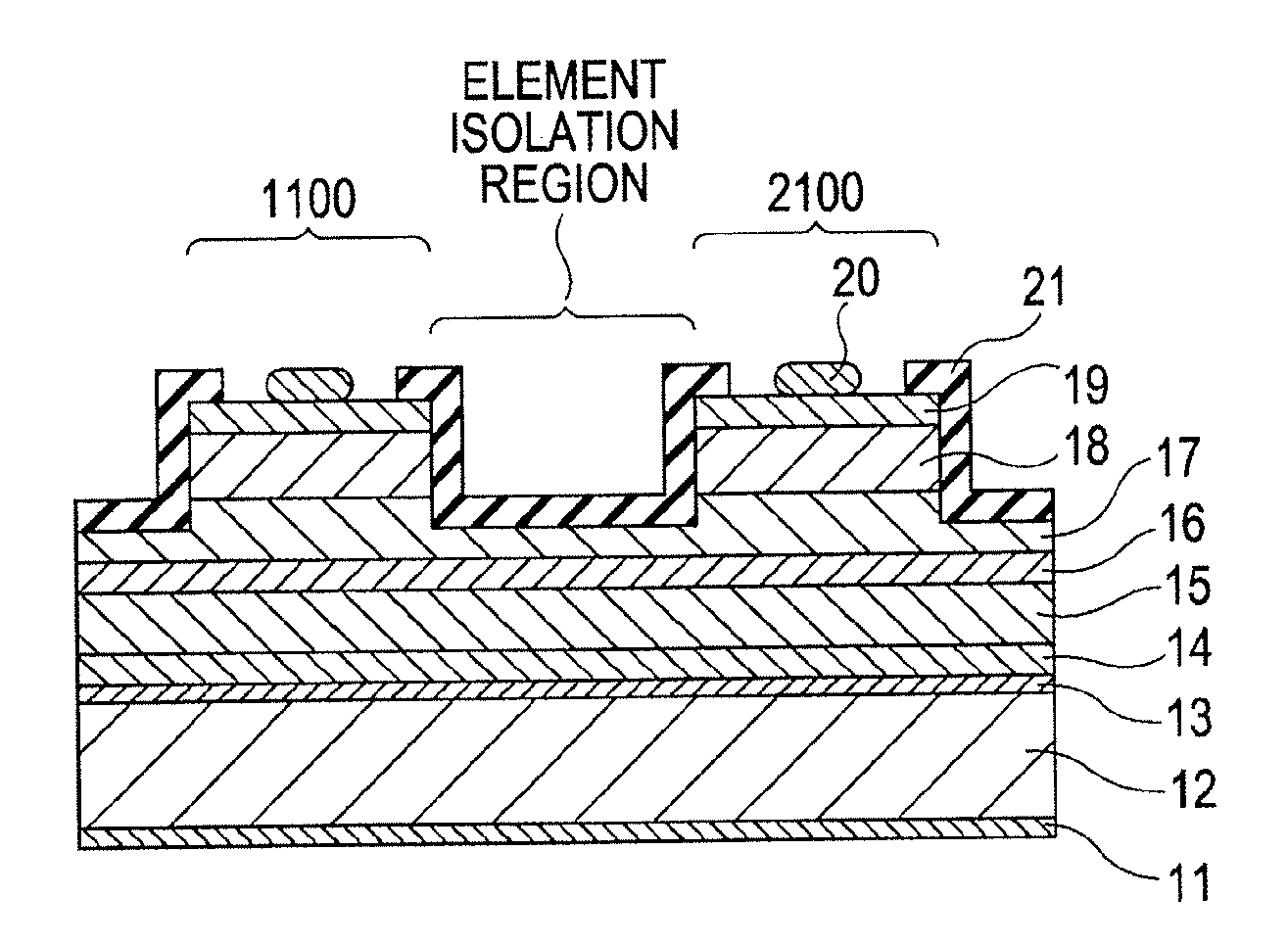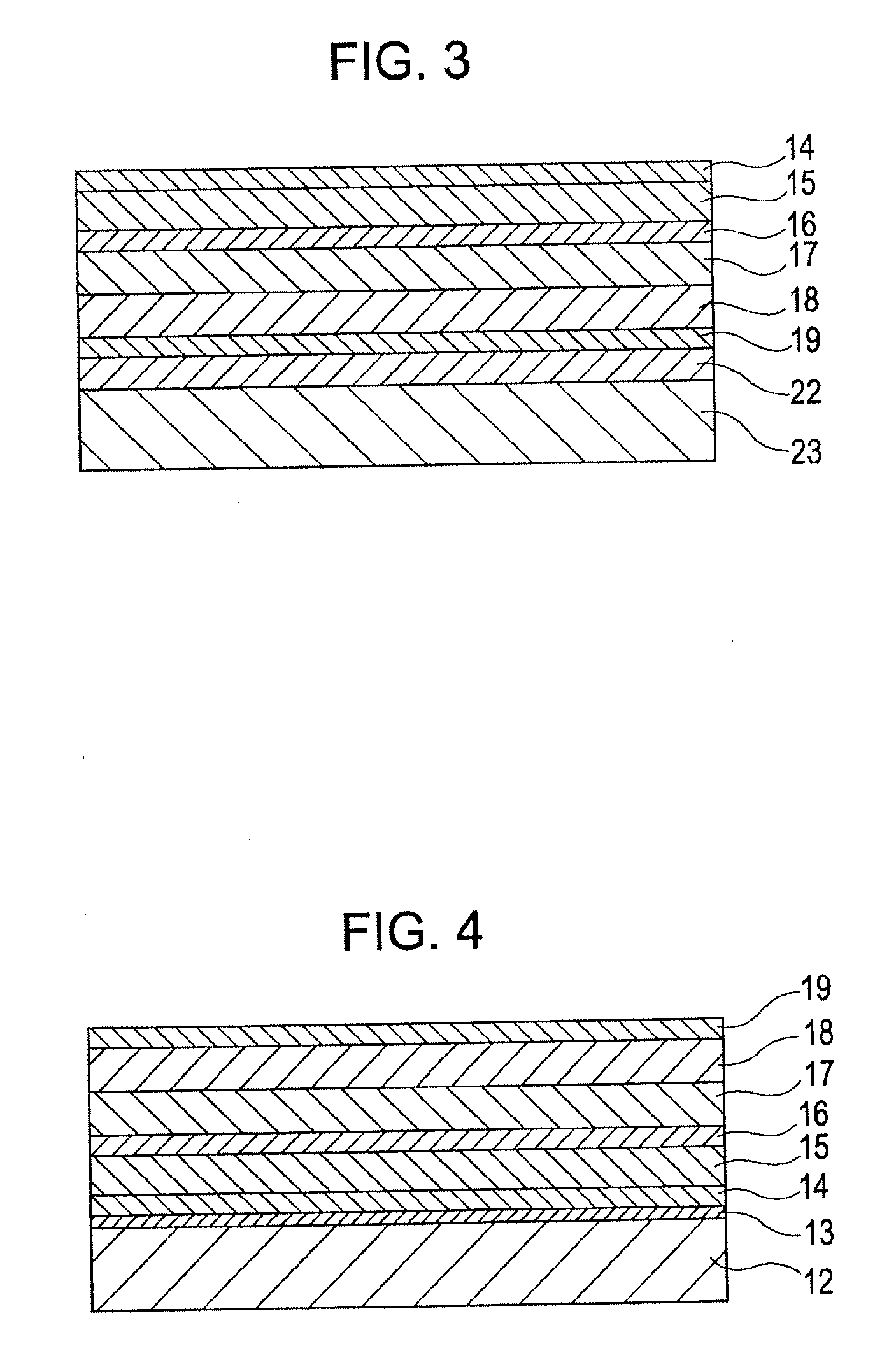Light emitting element array and image forming apparatus
an array and light-emitting element technology, applied in the direction of electrical apparatus, semiconductor devices, printing, etc., can solve the problems of reducing the light emission efficiency in the low current injection region, the influence of the active layer exposure on the light emission efficiency, and the waste of current components. , to achieve the effect of improving the electrical isolation at the element isolation region, and reducing the leak current between elements
- Summary
- Abstract
- Description
- Claims
- Application Information
AI Technical Summary
Benefits of technology
Problems solved by technology
Method used
Image
Examples
first embodiment
[0028]FIG. 1 is a cross-sectional view of a light emitting element array of a first embodiment according to the present invention. In this embodiment, the light emitting element array has an n-side electrode 11, an n-type Si substrate 12, a metal mirror 13, an n-type GaAs layer 14, an n-type AlGaAs layer 15, an AlGaAs quantum well active layer 16, and an undoped AlGaAs resistive layer 17. In addition, on the undoped AlGaAs resistive layer 17 are provided a p-type AlGaAs layer 18 functioning as a carrier injection layer (a hole injection layer in this embodiment), a p-type GaAs layer 19, a p-side electrode 20, and an insulating film 21. In order to achieve the element isolation, the p-type GaAs layer 19 and the p-type AlGaAs layer 18 are sequentially etched, and the AlGaAs resistive layer 17 is also partly etched. In FIG. 1, reference numeral 1100 indicates a first light emitting element region, and reference numeral 2100 indicates a second light emitting element region.
[0029]FIG. 2...
second embodiment
[0046]FIG. 7 is a cross-sectional view of a light emitting element array of the second embodiment according to the present invention. In FIG. 7, the same reference numerals as in FIG. 1 designate the same constituent elements, and a description thereof will be omitted. In this embodiment, which is different from that described with reference to FIG. 1, an AlInGaP etching stop layer 25 is formed on the AlGaAs resistive layer 17. Since etching is automatically stopped by this AlInGaP etching stop layer 25, more uniform element isolation can be realized.
[0047] In a process for forming the element array of this embodiment, as shown in FIG. 8, an element layer structure, which is inverse to a layer structure shown in FIG. 7, is formed on the GaAs substrate 23 by epitaxial growth. In this process, the AlAs selective etch separation layer 22 is inserted under the entire inverse structure. This AlAs selective etch separation layer 22 will be selective-etched in a subsequent step, so that t...
PUM
 Login to View More
Login to View More Abstract
Description
Claims
Application Information
 Login to View More
Login to View More - R&D
- Intellectual Property
- Life Sciences
- Materials
- Tech Scout
- Unparalleled Data Quality
- Higher Quality Content
- 60% Fewer Hallucinations
Browse by: Latest US Patents, China's latest patents, Technical Efficacy Thesaurus, Application Domain, Technology Topic, Popular Technical Reports.
© 2025 PatSnap. All rights reserved.Legal|Privacy policy|Modern Slavery Act Transparency Statement|Sitemap|About US| Contact US: help@patsnap.com



